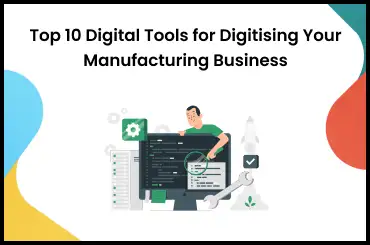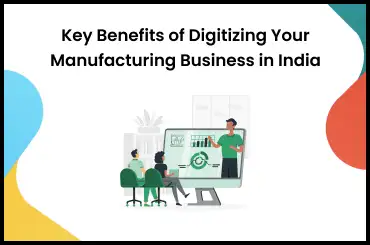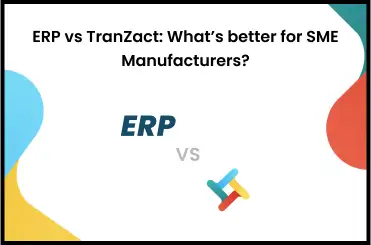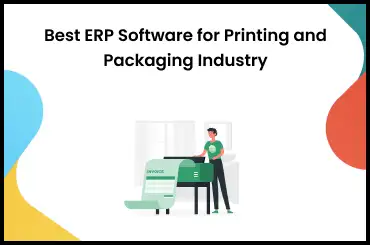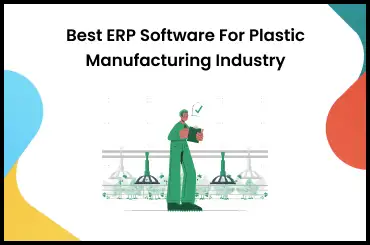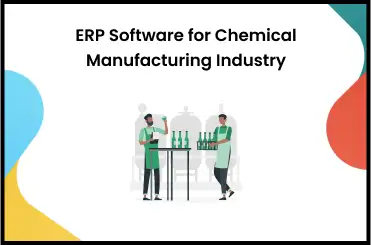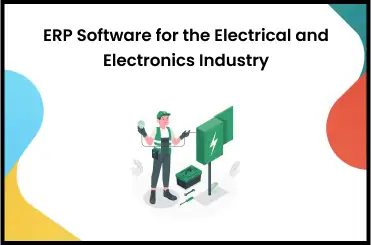Over the past few decades, functions of ERP system or enterprise resource planning systems have evolved and become essential to enterprises. A unified database for all financial and operational data from across the organization is provided by ERP software, which automates critical business activities. This information is gathered through several modules created to support the operations of several departments, including accounting, supply chain, inventory, production, and human resources.
With the aid of an ERP solution, all staff members have access to the data they require to address crucial concerns regarding the operation of their department today, plan for the future, and identify potential areas for improvement. This centralized source of data reduces problems with data consistency and accuracy and makes sure that everyone, regardless of role, is viewing the right numbers that are relevant to them.
What Are the Functions of ERP System?
ERP has many applications or features that can aid with business mobilization. Companies will find it simpler to execute decisions so that the outcomes they will get can be optimal after implementing an ERP system.
1. Simple Monitoring
A business corporation needs to monitor many factors, including finances, logistics, human resources, and more. ERP helps to make it simpler to keep track of everything in the business. So you can review the system's data before making a decision.
2. Inclusion
The simplicity of integration is another advantage of the ERP system. They might connect various firm components to ensure that everything is in sync.
3. Autonomous
There is no reason to question the complexity of ERP software. One of them is automation issues when making various advancements. Automation will also speed up the rate at which data is sent to its final location.
4. Planning
ERP is designed to simplify business planning functions. Even when they have rivals, they may still use this planning as a tactic to advance.
5. Easy Flow of Information
ERP software covers various departments, including accounting, sales, purchasing, and production. The necessity to disseminate all vital information to the numerous departments that might need the data is one of the most significant demands it addresses.
The software, constantly updated and monitored in real-time, ensures the necessary information is available to each relevant department. For instance, manufacturing would need to be informed about pending purchase orders. Or accounting may require information about payroll and upcoming business commitments.
Outside stakeholders may also receive information via ERP software. The effectiveness of a company's operations and financial stability often determine how much it is willing to invest in it. All stakeholders can stay informed about the company's ability to manage current and future operations thanks to the data contained in an ERP system.
6. IT Industries Enterprise Resource Planning
ERP systems and software are at the center of the technological world and they drive the efficiency and success of the information technology (IT) sector. ERP systems have notably seen a sharp increase in usage over the last ten years and subsequently started to rule the IT industry. Although the initial ERP systems were created mainly for large firms, due to their value, they are also being used by an increasing number of smaller businesses.
Small Businesses and ERP
ERP solutions were often only found in businesses with large enterprise (i.e., significant) structures and computer networks with dedicated servers and the funds necessary to run them until the turn of the twenty-first century. Today, many small enterprises take advantage of ERPs benefits, mainly due to two factors.
First, ERP systems are now quite affordable thanks to cloud computing solutions, still frequently referred to as SaaS (Software-as-a-Service). Small businesses can choose the features they want to use and sign up for a monthly or annual subscription. The software provider uses its servers to run the ERP systems, and its personnel handles all maintenance, upgrades, and backups for its clients.
The necessity to manage the growing amount of data that smaller businesses now have is the second factor driving their adoption of ERP.
Recent Trends in ERP
ERP systems continue to adapt to the evolving needs of businesses of all sizes, much like many other software solutions. SaaS and on-premise hybrid software make it possible for businesses with their own internal ERP software to combine it with a cloud-based solution to function together. Similarly, major multinational firms are starting to implement two-tiered ERP solutions, allowing the parent company to utilize one.
At the same time, the subsidiaries use another that considers various national legislation and variations in markets and cultures. Then there is ERP 2.0, called social ERP, which incorporates social media data. For CRM systems, this can be quite useful in assessing levels of customer involvement, brand mentions, post-sharing, and their impact on conversion rates.
Power Your Business With the Best ERP Solution
After reading the previous description, you must know an ERP system in detail. Several large and small companies can use this software by paying attention to its features and choosing the best software which suits their business needs. Ensure that the software is created with the firm's demands in mind.
TranZact offers advanced ERP solutions across sales, purchases, quotation management, production, and inventory. It helps SME businesses to automate core functions and collaborate with team members and external stakeholders effortlessly, for business ease!
FAQs on Functions Of ERP Systems
1. What is ERP and its types?
Enterprise resource planning systems vary from company to company, and a business may use multiple types of ERP systems, including software on-premises, in the cloud, and a hybrid ERP.
2. What is the difference between ERP and MRP?
The main difference between ERP and MRP is that MRP systems are primarily focused on materials management, while ERP systems assist in planning and automating many back-office company tasks like production, inventory, accounting, human resource management, and more.









